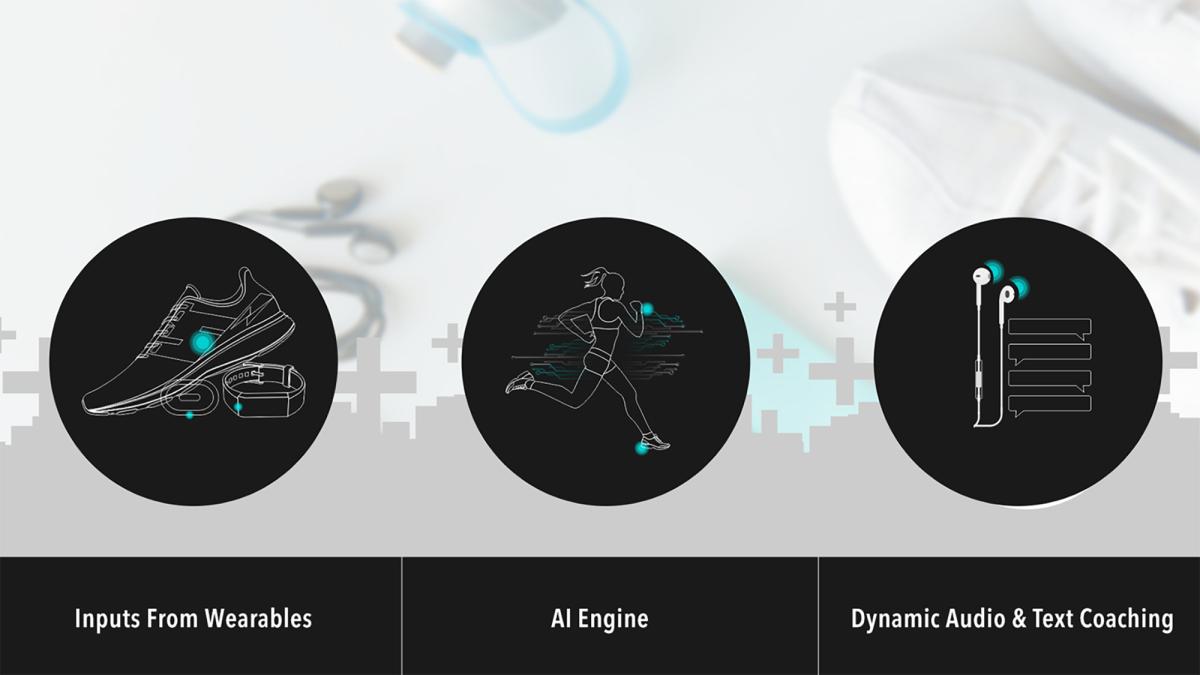Indian brand Boltt aims to change the game with AI-powered fitness wearable devices

Forget Silicon Valley, the next big thing in sports tech might be coming from Silicon Delhi instead. Boltt Sports Technologies, based in Noida, just south of New Delhi, was at CES last week demoing a connected platform of smart shoes, fitness bands, and a mobile app that it hopes will challenge the biggest names in the fitness tech world. And perhaps even raise India’s standing in the sports world.
The company doesn’t seem to be inventing the wheel, rather reinventing it. There are better-known brands making each of the three components that constitute Boltt, including Under Armor (smart shoes), Fitbit (wrist-worn trackers), and Strava (fitness apps). Boltt’s fitness system includes a smart band, smart shoes and training apps, all powered by Artificial Intelligence (AI). What might make Boltt stand out is the idea of building a connected platform of all three, and providing actionable insight through machine learning.
“We’re trying to displace the need for a nutritionist, a doctor, and an activity center,” says co-founder Aayushi Kishore. “We think that this is the next thing for the future of wearables, where you need to go beyond just tracking.”
Not your standard shades: Safilo's Smith sunglasses to feature brain-training tech
Boltt might be a new brand, and the Kishore family behind it might not be a familiar name in the U.S., but back in 2011, Aayushi and her father Lalit launched Globalite Retail, a local competitor to international shoe brands like Nike and Adidas that by 2015 was selling more than 500 million rupees (about $7.5 million) of shoes annually. Two years ago, the Kishores saw a niche in the wearables market and founded Boltt.
“[Inside India] the market is huge and only growing because the space is still small compared to countries outside,” Kishore says. But the company is quick to state that its ambitions are bigger than just its home country.
As if to highlight the company’s international focus, the Boltt brain trust crosses international borders, and includes Indian sleep specialist Manvir Bhatia, American pro triathlete Sally Edwards, South African strength and conditioning coach Mark Steele, American fitness trainer Nicole Chaplin, Hungarian data analytics advisor Péter Szabó, Romanian data scientist Raul Popa, and Indian sprinter Dutee Chand, among others.
Perhaps the most intriguing question about Boltt is whether it could awake the sleeping giant of the summer Olympics. Regardless of the company’s plans to sell its devices globally, the biggest impact Boltt could have on the elite sports world is by turning India from an Olympic also-ran to a major competitor.

At Rio 2016, India was tied with Mongolia for 67th place on the medal table, with one silver and one bronze. China, the only other country in the one-billion-people population bracket, was third, with 70 medals, including 26 golds. The last time India won a gold medal—in the men’s 10m air rifle—was at Beijing 2008.
If Boltt could discover even a tiny percentage of homegrown future Olympians, the impact would be significant. One gold medal added to India’s tally from Brazil would have jumped the country 19 places to 48th.
Working with Steele the company has developed a coaching platform separate to its mobile app.
Brain-training sunglasses, hearables and more: Top new sports tech at CES 2017
“This platform we plan to deploy in all sports academies specializing in soccer, rugby, hockey in India,” Kishore says. India’s men’s soccer team is currently ranked No. 135 by FIFA, and its women’s team is No. 54. In the same way as the country’s Olympic results, that doesn’t have to be viewed as a failure, but instead a huge opportunity for improvement. “We feel this to be a huge opportunity and an immense potential to be able to introduce these tech enabled solutions in industries like sports,” Kishore says.
Boltt plans to launch its products on pre-sale through Kickstarter soon, and hopes to ship devices this spring. Tokyo 2020 is three-and-a-half years away. Surely that’s enough time to find even just a single gold medalist among 1.3 billion Indians.
